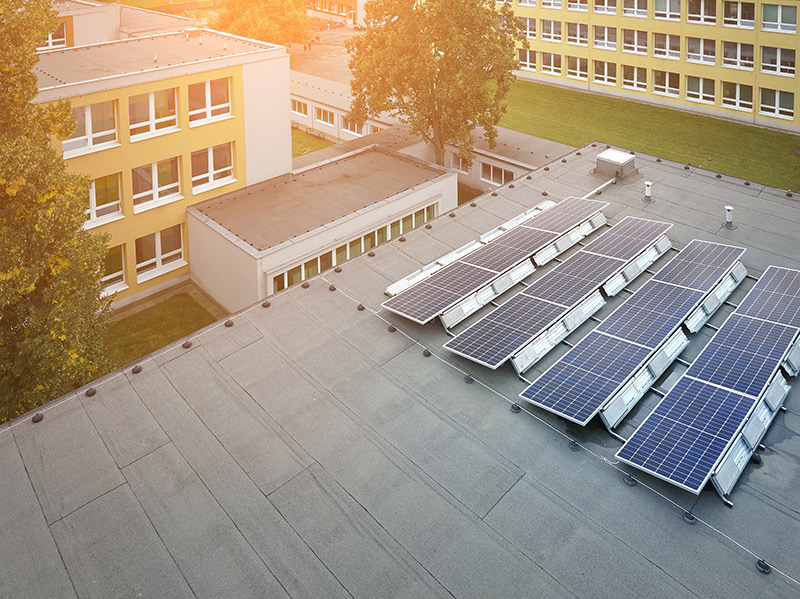
01 May,2024
It’s no secret that teachers encounter several challenges when it comes to the classroom. From limited resources to time constraints, consistently adapting to technological advancements and maintaining student engagement. Another challenge is the contribution of carbon emissions, which makes finding more sustainable strategies crucial.
Below are four ways educational facilities such as schools, universities and libraries can reduce their carbon emissions while also enhancing their productivity and energy efficiency.

With advancements in technology, there's a wide range of energy-efficient products available in the market. Choosing energy-efficient substitutes for domestic appliances and educational equipment can greatly lower carbon emissions. By replacing inefficient devices with more energy-efficient ones, educational institutions can lower their carbon footprint.
Effective waste management is crucial for reducing carbon emissions in the classroom. Educational institutions generate a significant amount of waste, including paper, plastic, and electronic materials.
Thorough recycling and waste management programmes can mitigate these adverse environmental effects. This means sorting different waste materials, recycling items when it makes sense, and putting innovative waste reduction techniques into practice, such as composting organic waste and reusable classroom equipment.
Educational organisations can reduce their carbon footprint through sustainability and environmental projects. If your education organisation isn’t already prioritising more environmental and sustainable measures, below are perfect examples to consider adapting:
When considering measures to reduce carbon emissions, educational institutions should prioritise the adoption of energy-efficient equipment.

Epson's Heat-Free Technology stands out as an exemplary solution, consuming a remarkable 94% less energy than traditional laser printers*, while also minimising usage. This makes it an ideal choice for schools aiming to curb their carbon footprint.
In contrast to laser printers, Epson's business inkjet printers and copiers operate with lower power consumption since they do not require a fuser unit for heating, thus significantly reducing energy usage.
Additionally, Epson inkjet printers and copiers necessitate fewer part replacements than their laser counterparts, thereby alleviating the environmental strain associated with manufacturing and recycling additional resources.
At Fintona Girls' School, Epson technology has been particularly relevant. By embracing Epson's Heat-Free printers, the school effectively
replaced its existing print fleet, addressing concerns regarding both printing efficiency and environmental impact. Despite initial hesitations about inkjet technology, Epson's copiers, notably the AM-C5000 and AM-C6000 models, were chosen over competitors due to their ability to align with the school's objectives of reducing environmental impact and printing costs while sustaining productivity.
Reducing carbon emissions in educational settings is important for maintaining sustainability. By implementing efficient technology, waste management and recycling, employing environmental projects and investigating new products like Epson inkjet printers and copiers, educational institutions can lower their carbon footprint and increase overall productivity.
*Epson's WF-C579R model is 97.0% more energy-efficient than 44 competitive models in the 21 to 35ppm A4 Colour MFP segment as at 1 Feb 2024 (comparing energy used while printing data) office.
Sign up to receive Epson's Latest News, Updates & Exclusive Offers
Welcome to Epson and keep an eye out for our latest updates and exclusive offers.
The webmaster has been notified about the problem.
You are providing your consent to Epson Australia Pty Ltd., so that we may send you emails with regards to interesting news, latest updates and exclusive offers.
You may withdraw your consent or view our privacy policy at any time.
Copyright © 2023 Epson Australia Pty Ltd. All rights reserved. ABN 91 002 625 783 EPNPRWEB04
